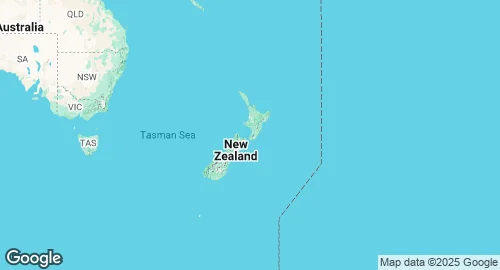New Zealand Military Forces 🇳🇿
Military Strength Overview
| 🛩️ Air Force | 42 active aircraft |
| 🪖 Active Troops | 9,000 personnels |
| ⛑️ Reserve Troops | 2,300 personnels |
Defense Statistics & Key Metrics
| Population | 5.2 million (2023) |
| GDP | $252.2 billion (2023) |
| GDP per capita | $48281 (2023) |
| Military Budget | $3.0 billion (2024) |
| Share of GDP in Milex | 1.2% (2024) |
| Share of Govt Expenditures | 2.8% (2024) |
| Military spends per capita | $577 (2024) |
| Inflation Rate | 2.92% (2024) |
| Military Personnel | 10,000 (2020) |
Strategic Overview in 2025
New Zealand's military is a compact, well-trained force, shaped by its unique geography, trade dependencies, and a foreign policy that emphasizes multilateralism and a stable, rules-based international order. While historically insulated by distance, there is a growing consensus that this buffer is diminishing in the face of a more contested Indo-Pacific region. This has prompted a significant reassessment of the nation's defense posture and capabilities.
Force Structure and Capabilities
The New Zealand Defence Force (NZDF) comprises three services: the Royal New Zealand Navy (RNZN), the New Zealand Army, and the Royal New Zealand Air Force (RNZAF).
The RNZN operates a modest surface fleet centered on two Anzac-class frigates. These are complemented by a multi-role vessel, offshore and inshore patrol vessels, and a specialist dive and hydrographic ship. A key limitation is the absence of a significant submarine capability.
The New Zealand Army is a light infantry force based around a brigade structure. It is equipped for peacekeeping, disaster relief, and limited combat operations. It lacks heavy armor, reflecting its focus on expeditionary and regional stability missions.
The RNZAF provides maritime patrol, transport, and utility helicopter capabilities. It retired its air combat wing in 2001 and currently has no fighter jets. Its most potent assets are its P-8A Poseidon maritime patrol aircraft, C-130 Hercules transports, and a fleet of helicopters.
New Zealand has a limited domestic defense industry, relying heavily on international partners for major platforms and advanced military technology.
Strategic Posture and Future Trends
New Zealand's strategic focus is threefold: its immediate neighborhood in the South Pacific, the wider Indo-Pacific, and contributing to global security operations. It works closely with Australia and is a member of the Five Power Defence Arrangements with Australia, the UK, Malaysia, and Singapore.
A recent Defence Capability Plan signals a shift in response to a deteriorating security environment, particularly acknowledging China's growing military reach. The government has expressed the need to develop a modern, combat-capable force and has indicated an intention to increase defense spending towards 2% of GDP. Key investment priorities include enhancing maritime strike capabilities, potentially by arming its P-8A aircraft and frigates with new anti-ship missiles. This move addresses a critical vulnerability and reflects a more robust defense posture aimed at deterring potential aggressors and maintaining relevance with key allies.
New Zealand Military Budget History
Population and Military Personnel Trends
GDP and Inflation Rate Trends
New Zealand Aircraft Manufacturing
| Model | Manufacturer | Year | Number |
|---|---|---|---|
| P750 | Pacific Aerospace | 2001 | 120 |
Military Expenditure: SIPRI Milex.
